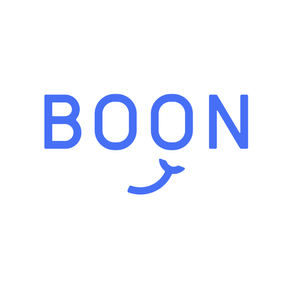Introduction: Leadership Development Is Broken
Most companies invest in leadership development the wrong way. They coach individual managers in isolation, expecting those changes to ripple outward. But research shows that without a comprehensive coaching culture, these efforts fail to create lasting organizational transformation.
A single manager’s development isn’t enough—real impact happens when coaching is embedded at every level of an organization, creating a ripple effect that transforms teams, departments, and entire businesses.
Why This Matters: The Business Case for Coaching at Scale
- Organizations with strong coaching cultures see 13% higher revenue growth than their peers (ICF Study)
- Companies that implement coaching at all levels experience 21% higher performance on key business indicators (Gallup Report)
- Coaching cultures result in 12% higher employee engagement, leading to better retention and performance (HBR)
This isn’t just a “nice to have.” Coaching cultures are a strategic advantage. Let’s break down why developing one manager isn’t enough—and how organizations can create sustainable leadership growth at scale.
The Coaching Ripple Effect: Beyond Individual Development
How One Coached Manager Impacts an Entire Team
When a manager is coached, it doesn’t stop with them. Their direct reports experience noticeable improvements in their work experience, engagement, and performance.
Research Shows Coaching’s Impact:
- 91% of direct reports see improvements in their own skills and mindset when their manager is coached (ICF Study)
- Managers who receive coaching for 7+ months create stronger ripple effects compared to those with shorter coaching experiences (Forbes)
- Employees who work under coaching-focused managers report greater psychological safety, trust, and team performance (McKinsey Report)
How to Roll Out Coaching Across Your Organization
To ensure coaching spreads effectively and aligns with business goals, organizations should follow a structured approach based on Boon’s four core offerings:
Step 1: Develop Senior Leaders with Boon Exec
- Who it’s for: Executives & senior leadership teams
- What it includes: 1:1 executive coaching with 360 reviews, Hogan assessments, and leadership diagnostics
- Why it matters: Coaching must start at the top—leaders set the tone for the rest of the organization, enabling the Cascading Coaching Model to take effect.
Step 2: Train Emerging Leaders with Boon Grow
- Who it’s for: Mid-level managers & high-potential emerging leaders
- What it includes: A 12-session 1:1 coaching program with embedded 4-6 group coaching sessions, tracking pre/post skill development
- Why it matters: Managers need structured coaching to drive effective leadership behaviors within teams and reinforce the cascade.
Step 3: Scale Coaching to All Employees with Boon Scale
- Who it’s for: Entire organization (opt-in coaching for employees at all levels)
- What it includes: Confidential, 1:1 coaching in 30-minute sessions, covering both professional growth & mental health
- Why it matters: True coaching cultures ensure that everyone has access to coaching—not just leadership. This step ensures the cascade continues at all levels.
Step 4: Reinforce Coaching Culture with Boon Together
- Who it’s for: Company-wide workshops, team-based learning, & peer coaching
- What it includes: Custom group coaching solutions like Leadership 101, new manager workshops, and mental health series
- Why it matters: Embeds coaching deep into company culture, sustaining it long-term. This step closes the loop on the coaching cascade, ensuring a self-sustaining system.
Additional Strategies to Sustain a Coaching Culture
Measure Coaching’s Impact on Business Metrics
- Track coaching’s effect on employee engagement, retention, and leadership readiness.
- Use pre/post skill assessments to quantify leadership growth.
Encourage a Peer-to-Peer Coaching Mindset
- Train managers to coach each other through structured peer coaching.
- Implement mentorship programs to foster coaching at all levels.
Embed Coaching into Daily Workflows
- Encourage leaders to use coaching techniques in everyday conversations.
- Provide AI-driven coaching resources for just-in-time support.
Industry Research on Coaching ROI
- Organizations with structured coaching programs report 14% higher productivity (Gallup).
- Companies investing in leadership development see 4x higher revenue growth (McKinsey).
Conclusion: Coaching as an Organizational Imperative
Developing one manager isn’t enough—organizations must scale coaching at every level to see real impact. The coaching ripple effect is a force multiplier, driving better leadership, engagement, and business outcomes.
Final Takeaways:
✅ Leadership development should extend beyond individual managers
✅ Coaching creates measurable business benefits (higher revenue, engagement, retention)
✅ A coaching culture must be embedded in leadership expectations and reinforced daily
✅ Boon Scale: Coaching should be accessible to all employees, not just executives (Boon Scale)
✅ Boon Together: Group coaching ensures long-term sustainability (Boon Together)
Organizations that invest in coaching at scale will outperform their competitors, retain top talent, and build a resilient, high-performing workforce. The question isn’t “Should we coach our managers?”—it’s “How can we ensure coaching reaches every level of our organization?”

